More than two years after the outbreak of COVID-19 in 2020 and the unprecedented monetary policies that followed, recovery in the sovereign debt market has been uneven. While high-income sovereigns are on a slow path to recovery overall, the situation is far more complex across emerging market (EM) economies, and there are a variety of issues in play. Net debt issued by low-income sovereigns reached ‘record highs in 2021’, more than doubling within only one year, from $3.2bn issued in 2020 to $7.8bn in 20211.
Amid ongoing fears of a potential sovereign debt crisis, the aim of this article is to analyze and summarize macro trends in the sovereign debt market, with particular focus on EM sovereigns holding foreign currency bonds.
Responding to the Pandemic
Central banks’ collective strategy of monetary easing during the COVID-19 pandemic has contributed towards a particularly destabilizing effect on EM and low-income economies, impacting currencies, inflation, and food prices. Global inflation has rocketed from 4.7% in 2021 to an anticipated 8.8% in 20222. Several central banks have responded in turn by raising interest rates. There are fears that this could precipitate a sovereign debt crisis among EM and low-income countries, who are already grappling with high debt-to-GDP ratios following the pandemic.
In its latest World Economic Outlook, the IMF halved its growth projections for both 2022 and 2023. On a global scale, the 6% growth experienced in 2021 is projected to go down to 3.2% in 2022 and further contract to 2.7% in 2023. In advanced economies, growth is expected to shrink from 5.2% in 2021 to 2.4% and 1.1% in 2022 and 2023, respectively. In turn, EM economies which had grown by 6.6% in 2021 are expected to contract at 3.7% during each of 2022 and 20233. Note that the range within the EM economies’ predictions is tremendous, however: Brazil’s 2022 and 2023 growth forecasts are 2.8% and 1.0% respectively, compared to 6.9% and 5.4% for India4.

Responding to the Pandemic
Central banks’ collective strategy of monetary easing during the COVID-19 pandemic has contributed towards a particularly destabilizing effect on EM and low-income economies, impacting currencies, inflation, and food prices. Global inflation has rocketed from 4.7% in 2021 to an anticipated 8.8% in 20222. Several central banks have responded in turn by raising interest rates. There are fears that this could precipitate a sovereign debt crisis among EM and low-income countries, who are already grappling with high debt-to-GDP ratios following the pandemic.

In its latest World Economic Outlook, the IMF halved its growth projections for both 2022 and 2023. On a global scale, the 6% growth experienced in 2021 is projected to go down to 3.2% in 2022 and further contract to 2.7% in 2023. In advanced economies, growth is expected to shrink from 5.2% in 2021 to 2.4% and 1.1% in 2022 and 2023, respectively. In turn, EM economies which had grown by 6.6% in 2021 are expected to contract at 3.7% during each of 2022 and 20233. Note that the range within the EM economies’ predictions is tremendous, however: Brazil’s 2022 and 2023 growth forecasts are 2.8% and 1.0% respectively, compared to 6.9% and 5.4% for India4.
A Mixed Picture
According to Deloitte, interest rate hikes – particularly from the U.S. – may be weakening EM currencies, raising borrowing costs and exacerbating inflation at a time when many sovereigns already have high debt-to-GDP ratios. An Institute of International Finance (IIF) report at the start of 2022 found that while debt-to-GDP ratios are falling in developed economies, EM sovereigns are increasingly relying on off-budget borrowing for their financing needs. Some individual EM sovereigns have debt-to-GDP ratios several times the size of other high-income sovereigns and are facing additional challenges for refinancing their significantly high legacy debt from the pandemic.
An August 2022 study by asset management firm GMO, on the other hand, painted a more positive picture. Its examination of 70 countries’ debt-to-GDP ratios found most EM sovereigns still had “sound debt dynamics”5, with only six countries (Sri Lanka, Zambia, Ethiopia, Suriname, Lebanon, and Ukraine) in the default category.
According to S&P Global, most EM sovereigns are growing ahead of expectations, despite issues in certain Latin American jurisdictions bringing the overall figure down6. Many Latin American EM sovereigns have had their growth stalled by severe supply chain issues – particularly Brazil and Mexico. On the other hand, the situation is stabilizing in emerging Asia: the Philippines is bucking the trend and exceeding growth expectations by over 2%, with a year-on-year growth rate of 7.1%.
High commodity prices and the widening gap between commodity exporters and importers has benefitted several EM sovereigns. Fitch Ratings projects major commodity exporters will see median growth in the dollar value of GDP in 2022 of 16.6%, compared with 6.6% for minor commodity exporters7. A strong dollar relative to local currencies makes this dollar inflow particularly valuable to EM economies. Energy security problems may strengthen not only EM energy exporters, but also exporters of materials needed to produce renewable energy. With the continued strengthening in global pledges to climate goals, these EM sovereigns are faced with enormous opportunities.
Over the past year, several EM central banks, including Mexico and Brazil, were ahead of developed market counterparts like the U.S. and UK in raising interest rates. This also placed them in a stronger position in the face of global interest rate hikes and the inflation rise that followed.
These mixed reports may portend that predictions of a looming sovereign debt crisis are premature for at least a large subset of EM sovereigns that have the debt resilience and fiscal space to hold off a crisis if conditions continue to worsen for a sustained period of time.
A Mixed Picture
According to Deloitte, interest rate hikes – particularly from the U.S. – may be weakening EM currencies, raising borrowing costs and exacerbating inflation at a time when many sovereigns already have high debt-to-GDP ratios. An Institute of International Finance (IIF) report at the start of 2022 found that while debt-to-GDP ratios are falling in developed economies, EM sovereigns are increasingly relying on off-budget borrowing for their financing needs. Some individual EM sovereigns have debt-to-GDP ratios several times the size of other high-income sovereigns and are facing additional challenges for refinancing their significantly high legacy debt from the pandemic.
An August 2022 study by asset management firm GMO, on the other hand, painted a more positive picture. Its examination of 70 countries’ debt-to-GDP ratios found most EM sovereigns still had “sound debt dynamics”5, with only six countries (Sri Lanka, Zambia, Ethiopia, Suriname, Lebanon, and Ukraine) in the default category.
According to S&P Global, most EM sovereigns are growing ahead of expectations, despite issues in certain Latin American jurisdictions bringing the overall figure down6. Many Latin American EM sovereigns have had their growth stalled by severe supply chain issues – particularly Brazil and Mexico. On the other hand, the situation is stabilizing in emerging Asia: the Philippines is bucking the trend and exceeding growth expectations by over 2%, with a year-on-year growth rate of 7.1%.
High commodity prices and the widening gap between commodity exporters and importers has benefitted several EM sovereigns. Fitch Ratings projects major commodity exporters will see median growth in the dollar value of GDP in 2022 of 16.6%, compared with 6.6% for minor commodity exporters7. A strong dollar relative to local currencies makes this dollar inflow particularly valuable to EM economies. Energy security problems may strengthen not only EM energy exporters, but also exporters of materials needed to produce renewable energy. With the continued strengthening in global pledges to climate goals, these EM sovereigns are faced with enormous opportunities.
Over the past year, several EM central banks, including Mexico and Brazil, were ahead of developed market counterparts like the U.S. and UK in raising interest rates. This also placed them in a stronger position in the face of global interest rate hikes and the inflation rise that followed.
These mixed reports may portend that predictions of a looming sovereign debt crisis are premature for at least a large subset of EM sovereigns that have the debt resilience and fiscal space to hold off a crisis if conditions continue to worsen for a sustained period of time.
What This Means for Sovereign Bonds
Growing fears of an impending recession, combined with higher U.S. interest rates and shrinking liquidity, mean EM economies have raised minimal funds from global bonds markets this year. September estimates show that EM sovereigns have sold a combined $67.5bn worth of debt during 2022 so far, down $60.4bn on from 20218. EM and low-income sovereigns with foreign-currency denominated bonds are therefore coming under particular pressure.
Several sub investment grade-rated countries issued hard-currency debt before global interest rates rose in March. Overall, however, the first eight months of 2022 was the slowest since 2016, with just over $18bn in hard currency high-yield debt sold. Riding high on oil exports, meanwhile, Oman implemented a buyback of hard currency sovereign bonds and issued government sukuk (Islamic bonds) on the Muscat Stock Exchange at preferable rates as part of a broader debt consolidation.

There is some positivity for local currency compared to hard currency bond markets, despite the weaker growth outlook. Capital Economics is among those predicting a positive outcome for EM local currency sovereign bonds for the rest of 20229. Among other reasons for this, it cites an anticipated continuation of strict EM central bank policies and an anticipated premium on EM debt caused by a troubled global economy. As inflation is a universal problem and EM assets are relatively cheap compared to their developed market peers, EM currency bonds may well appear more attractive to investors.
Emerging Market Sovereigns Turn to IMF Over Debt Markets
From May 2020 until December 2021, the World Bank and IMF-supported Debt Service Suspension Initiative (DSSI) suspended $12.9bn in debt-service payments owed by participating countries to their creditors. Against the backdrop of the now terminated DSSI, recipient countries of that program have to turn to international capital markets for their funding needs10.
On August 2, 2021, the IMF Board of Governors approved the largest allocation of Special Drawing Rights (SDRs), an international reserve asset to supplement IMF member countries’ official reserves, in the history of the IMF, equivalent to $650bn to boost global liquidity11. SDRs have taken a lot of pressure away from many EM sovereigns including low-income sovereigns, for about $275bn were allocated to them12.

Ghana abandoned plans to tap global markets and instead obtained $1bn through its SDR in 202113. El Salvador is using SDRs to buy back sovereign bonds, though there are fears this may not be enough to tackle its high debt levels14. After receiving the biggest ever IMF loan of $57bn in 2018, Argentina struck a new deal with the IMF this year to unlock a further $4bn in funds to tackle its ongoing debt issues15. With its external capital markets now effectively closed, Egypt is the latest country to have reached a funding deal with the IMF ($3bn) that will run over 46 months.
Bottom Line
As the global economy struggles with a challenging and unprecedented economic climate, emerging and low-income sovereigns have been hit harder than developed economies. Within this, however, certain EM sovereigns are in a stronger position than others: whilst the fiscal revenues of commodity exporters are bolstered from higher commodity prices, the account balances of net energy importing EM sovereigns, including Chile, India, the Philippines and Turkey, are currently worsened due to soaring energy prices16. And EM sovereigns holding hard currency bonds are facing particular challenges, due to high inflation and poor exchange rates.
Overall, however, there are positive signs for EM sovereigns going into 2023. On the one hand, much will depend on their ability to raise financing from alternative sources if hard currency bond markets remain volatile and illiquid for the foreseeable future. On the other hand, the currently faced challenges may also bring about greater monetary resilience as well as new opportunities, especially in the renewable energy and sustainability-driven realm. For instance, the International Finance Corporation (IFC) already reported that the volume of green bond issuance in EMs ‘more than doubled’ to a record $95bn in 2021 from $41bn in 2020, illustrating their increasing role as an important source of funding for many EM sovereigns. Indeed, the IFC forecast green bonds issuance in EMs to rise to $150bn by 2023, with China making up the biggest share17.

Lynn Ammar
Partner
Abu Dhabi
T: +971 2 412 1714
lammar@cgsh.com
V-Card

Jonathan Griggs
Associate
London
T: +44 20 7614 2312
jgriggs@cgsh.com
V-Card

